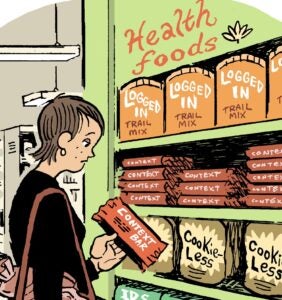Content is still king, sure. But maybe context is queen.
According to Adam Paul, executive director of media alliances at LiveRamp, the old-school programmatic ads – the ones bought across multiple platforms without regard to context or audience – are underperforming on CTV these days.
“There’s very little relevance or connective tissue between those placements.” said Paul. “It doesn’t create that critical mass in my mind to change a behavior or to change a brand perception.”
But how can you scale context for the programmatic age? Paul has some suggestions, including finding smaller live events to orient around and using the right data to inform your ad buys.
ADEXCHANGER: Is there quantitative evidence to suggest that traditional programmatic ads are underperforming?
Adam Paul: It’s more anecdotal. When I speak to my clients that are creating more integrated experiences that still use programmatic pipes – PMPs or programmatic guarantees or whatever it is – they’re seeing a significant improvement in results that they can deliver to advertisers.
It’s not so much that the old-school programmatic is underperforming; it’s that the newer and emerging solutions that have contextual overlays are overperforming.
So it sounds like the more an ad has in common with the content, the better the ad does.
I would also point to the more contextually relevant and integrated things that some of our partners have done.
Take SNL50 as an example. For better or for worse, I had the flu, so I consumed so much SNL50. NBC had a concert on the Thursday before the weekend, and then they had a big show on Sunday night. They rehashed a whole bunch of old content that they curated on the Peacock app. And then they had a handful of premium sponsors that they integrated into the show with new creative featuring SNL stars.
So yeah, contextual relevance is important more generally, but these integrated sponsorships are performing incredibly well for advertisers across premium content.
The problem with aligning to cultural tentpoles is that there’s only so much inventory to go around. What do you suggest for brands who can’t afford to buy ads during, say, major live sporting events?
What we’re able to do is overlay brand first-party data with TV viewership signals and identify smaller live sports properties.
If you use data to say, “Oh, my first-party audience isn’t only interested in the NFL, but they watch women’s softball, they watch pickleball, they watch high school sports.” Then, you can cobble together a lot of inventory.
It takes a little bit more elbow grease to do it, but you can use first-party data to identify the longer tail of potentially lower-cost premium live sports across the ecosystem and generate an audience and scale.
For advertisers, is it better if they’re specifically targeting the audience for those niche sports? Or does the tactic still work if they’re just trying to get in front of any sports audience?
I think it’s a little bit of both. Advertisers like sports for the appointment viewing and the ads you can’t skip. But sports also have so many valuable brand messaging alignment opportunities.
Whether it’s teamwork or hard work or camaraderie, those are messages that brands typically like to align to health and wellness. For example, Eli Lilly did a great job aligning their “Get Better” campaign with the Olympics and with women’s basketball because of that natural relationship between health and sports.
What do you think the best CTV data strategy needs to have?
Because so much viewership is going to CTV, you can still think of it as a scale play now, similar to how you would buy big cultural moments like the Oscars.
From a metrics perspective, you can use data to better inform and think about your scale buys.
Traditionally, you would equate it to brand metrics, brand equity, brand recall and those kinds of things, but because you can do better targeting against niche audiences using things like shopper data, you can use it to drive lower-funnel strategies as well.
What kind of stuff is LiveRamp doing to make this type of strategy possible?
The biggest innovation that we have in the market right now is cross-publisher measurement that we can provide to the buy side – so integrating exposures from premium publishers and walled social and bringing that all together into a unified view that a customer can have of their investment.
That product is called Cross-Media Intelligence, and we are now moving that product into the clean room. That enables a move away from pixel-based data to log-level data, which is just a better signal. It’s removing any blind spots you might have where pixels get blocked. It’s better at tying log-level exposure data to person-based identity, and it’s doing it in a way that’s more privacy compliant and comfortable for the publishers.
This interview has been lightly edited and condensed.
Questions? Comments? Concerns? Let me know what you think of this newsletter at victoria@adexchanger.com.
For more articles featuring Adam Paul, click here.
















